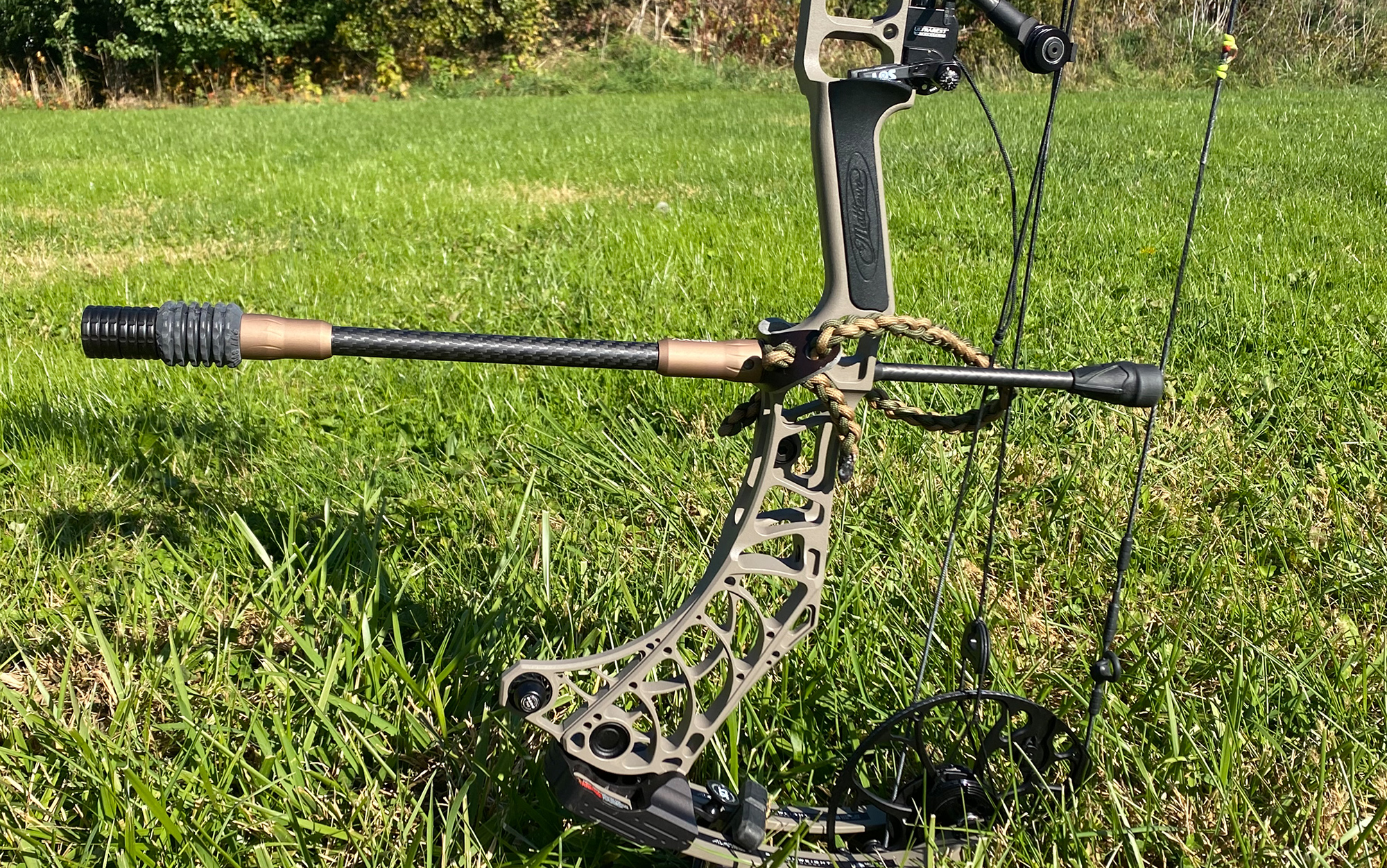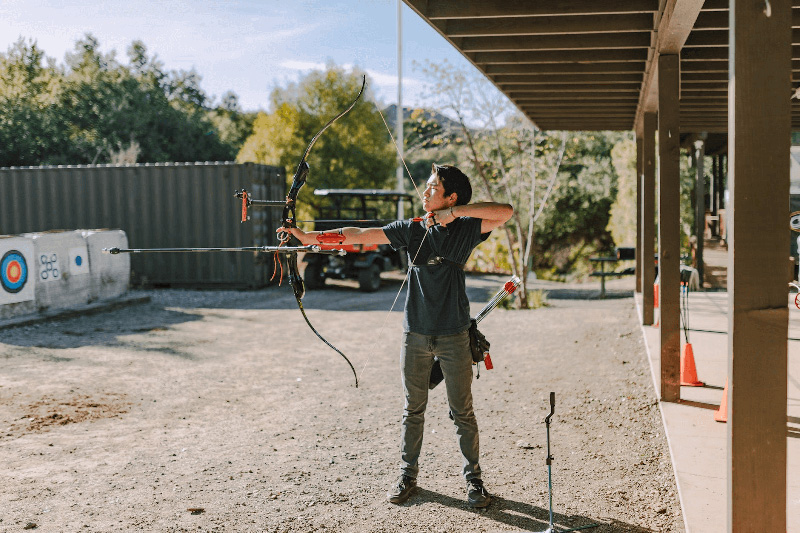The Scientific Research Behind Archery Stabilizers: Just How They Boost Efficiency
Master the Art of Archery: Comprehending the Value of a Stabilizer in Your Setup
Whether one is a seasoned archer or simply beginning their trip, the relevance of a stabilizer in their configuration can not be overstated. By comprehending the advantages of utilizing a stabilizer, considering the best factors when choosing one, and properly setting up and adjusting it, archers can elevate their skills to brand-new heights.
The Role of a Stabilizer in Archery
A stabilizer plays an essential role in archery by enhancing balance and reducing vibrations throughout the shot. When an archer draws the bowstring and launches it, there is a transfer of power that can cause the bow to shake. These vibrations can adversely affect the precision of the shot. A stabilizer helps to combat these resonances by dissipating the energy and taking in.
Among the primary advantages of a stabilizer is its ability to enhance equilibrium. When an archer holds a bow, it can be challenging to keep a steady aim. The weight of the stabilizer aids to distribute the weight evenly, minimizing the pressure on the archer's arm and boosting stability. This allows the archer to concentrate on their objective and implement a much more precise shot.
In addition to balance, a stabilizer additionally aids to lower torque. When an archer launches the bowstring, there is a natural propensity for the bow to rotate in the hand. This turning, referred to as torque, can trigger the arrow to drift off-course. The weight and layout of a stabilizer counteract this turning, guaranteeing a more consistent and exact shot.
Advantages of Using a Stabilizer
The utilization of a stabilizer in archery supplies numerous advantages that enhance an archer's performance and general capturing experience. By soaking up and moistening these resonances, the stabilizer improves the security of the bow, allowing for more consistent and specific shots.
Secondly, a stabilizer helps to stabilize the bow by adding weight to the front end. This weight circulation combats the all-natural tendency of the bow to tip onward upon launch, lowering the quantity of movement and enhancing the archer's ability to keep goal on target.

Last but not least, a stabilizer can likewise serve as a shock absorber, reducing the shock and recoil experienced upon launch. This not just improves the convenience of capturing but additionally decreases the risk of injury or stress on the archer's body.
How a Stabilizer Boosts Precision
Enhancing the accuracy of an archer's shots, a stabilizer plays an essential duty in improving overall efficiency. archery stabilizer. By including stability to the bow, a stabilizer helps decrease the undesirable activity and vibration that can happen during a shot. This decrease in movement permits the archer to keep a constant purpose, resulting in more consistent and accurate shots

Furthermore, a stabilizer assists to wet vibrations that happen upon release. These resonances can create the acquiesce shake, influencing the arrowhead's trajectory and accuracy. By taking in and dissipating these vibrations, a stabilizer helps to keep the bow's stability and guarantee a accurate and smooth shot.
In addition, a stabilizer can also help in balancing the weight circulation of the bow (archery stabilizer). By adding weight to the front of the bow, a stabilizer assists to stabilize the weight of accessories, such as quivers or sights, which may be affixed to the bow. This balanced weight distribution aids the archer preserve a constant and regulated capturing placement, resulting in boosted precision
Factors to Consider When Picking a Stabilizer
When choosing a stabilizer for your bow, it is vital to think about several variables that will certainly add content to its general effectiveness and suitability for your individual capturing design. The very first aspect to consider is the size of the stabilizer. Stabilizers come in different sizes, varying from short to long. Longer stabilizers usually supply much more stability and equilibrium, yet they can likewise be larger and much more tough to maneuver. Much shorter stabilizers, on the other hand, offer much better maneuverability but might sacrifice some security.
Another aspect to take into consideration is the weight of the stabilizer. The weight of the stabilizer can impact the balance of your bow.
Furthermore, it is important to consider the style and building of the stabilizer. Some stabilizers have flexible features, such as adjustable size or adjustable weights, which enable you to tailor the stabilizer to your details demands. The products utilized in the building and construction of the stabilizer can also affect its efficiency. Carbon fiber stabilizers are resilient and lightweight, while aluminum stabilizers offer an equilibrium between weight and rigidity.
Different stabilizers might work far better for certain shooting styles, such as target shooting or hunting. It is recommended to consult with knowledgeable archers or experts to identify which stabilizer will certainly best fit your private demands.
Tips for Correctly Readjusting a stabilizer and mounting
Appropriate installment and adjustment of a stabilizer is critical for enhancing its efficiency and guaranteeing optimum capturing accuracy. When installing a stabilizer, it is very important to comply with a couple of key steps to guarantee its efficiency. Figure out the suitable size of the stabilizer based on your shooting design and choices. Longer stabilizers supply more stability however can be much less manoeuvrable, while much shorter stabilizers offer enhanced ability to move however might give up security. Connect the stabilizer to the bow using the supplied installing equipment as soon as you have actually picked the try this site ideal length. Ensure that the stabilizer is firmly attached and lined up with the bow's riser.
After mounting the stabilizer, it is required to make adjustments to achieve the wanted balance and shot uniformity. Start by adjusting the weight distribution along the stabilizer. Additionally, think about adjusting the angle of the stabilizer to make improvements the shot.

Verdict
To conclude, a stabilizer plays a crucial function in archery by boosting accuracy and reducing bow torque. By adding weight to the bow, it helps to balance and support the shot. When selecting a stabilizer, variables such as size, weight, and product ought to be thought about to satisfy individual demands. Proper installation and change of the stabilizer are likewise vital for ideal efficiency. Understanding using a stabilizer can substantially boost the archer's ability and precision.
Furthermore, a stabilizer can likewise assist in balancing the weight circulation of the bow. By adding weight to the front of the bow, a stabilizer aids to stabilize the weight of accessories, such as quivers or sights, which might be connected to the bow. Some stabilizers have adjustable functions, such as adjustable size or adjustable weights, which permit you to personalize the stabilizer to your certain requirements. Carbon fiber stabilizers are resilient and light-weight, while light weight aluminum stabilizers supply an equilibrium between weight and rigidity.
Longer stabilizers offer even more security but can be less manoeuvrable, while shorter stabilizers use raised ability to move however may give up security.